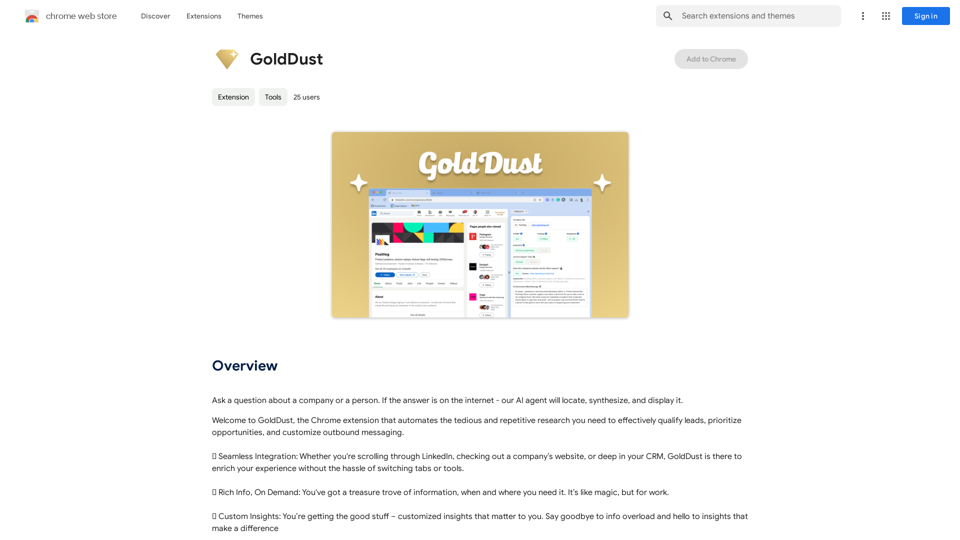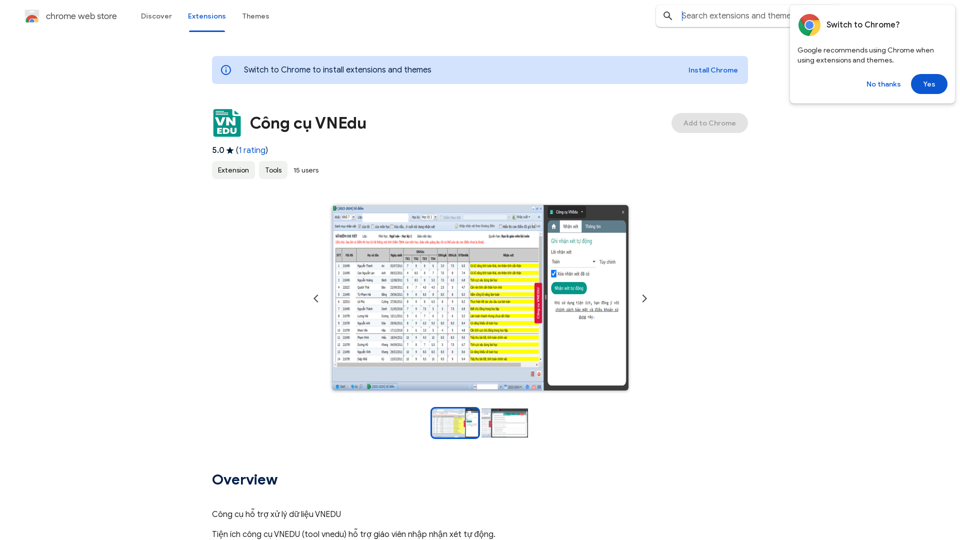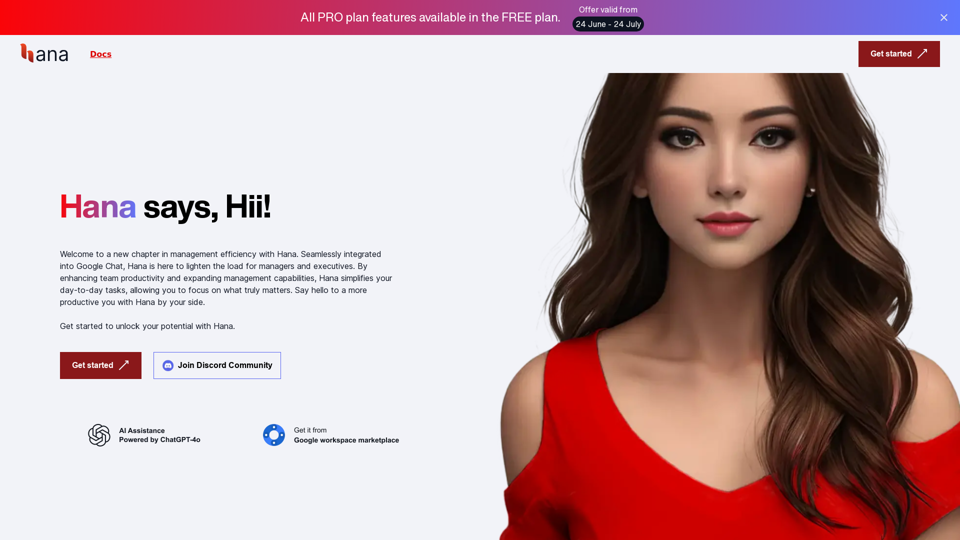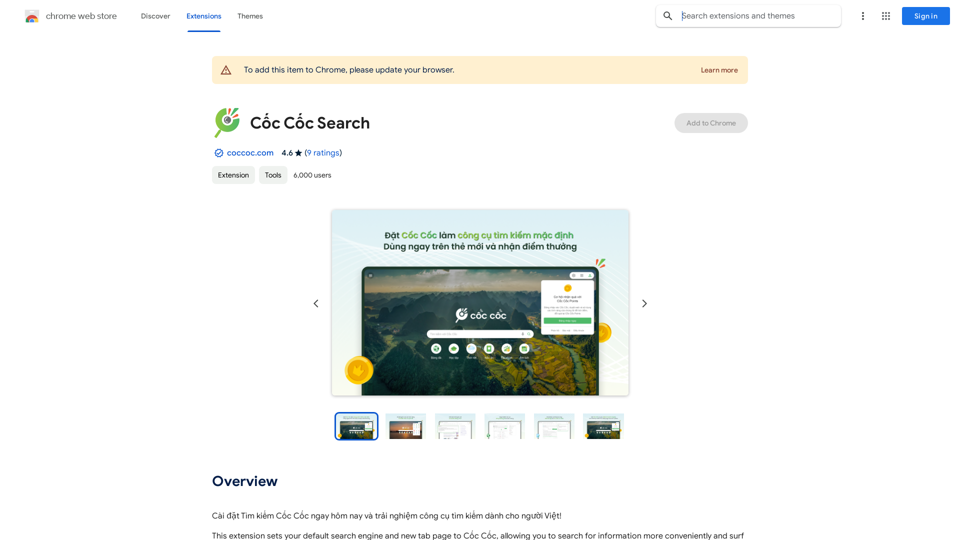Yoom Knowledge is a Chrome extension that revolutionizes email composition using AI technology. It seamlessly integrates with popular email platforms like Gmail and Outlook, offering users a quick and efficient way to generate emails. This tool is designed to boost productivity and streamline communication for both personal and professional use.
Yoom Knowledge
Using the Yoom Knowledge Chrome extension, you can automatically generate email content in Gmail or Outlook.
AI will create emails for you using the company knowledge accumulated in Yoom Knowledge, allowing you to complete email responses in an instant.
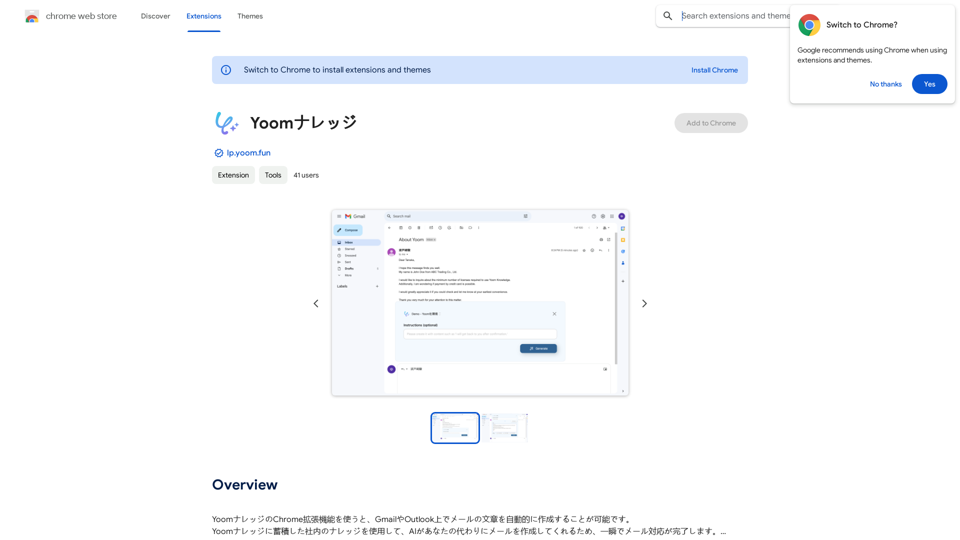
Introduction
Feature
AI-Powered Email Generation
Yoom Knowledge utilizes advanced AI technology to automatically create emails based on user input, significantly reducing the time and effort required for email composition.
Seamless Integration
The extension integrates smoothly with Gmail and Outlook, allowing users to leverage its capabilities within their preferred email platforms.
Versatile Application
Yoom Knowledge caters to a wide range of email needs, from business communication to personal correspondence, making it a versatile tool for various user requirements.
AI Chatbots and Learning Prompts
Users gain access to an extensive collection of AI chatbots and learning prompts, enhancing the email creation process and offering diverse communication options.
User-Friendly Installation
Getting started with Yoom Knowledge is straightforward - simply download and install the Chrome extension to begin using its features immediately.
Flexible Pricing Options
Yoom Knowledge offers both a free version with limited features and a paid subscription plan with additional functionality, catering to different user needs and budgets.
FAQ
What are the system requirements for Yoom Knowledge?
Yoom Knowledge is compatible with Google Chrome and requires a minimum of 100MB of free disk space.
How can I maximize the benefits of Yoom Knowledge?
To get the most out of Yoom Knowledge:
- Use it to create emails quickly and efficiently
- Experiment with different AI chatbots and learning prompts
- Automate repetitive tasks to increase productivity
- Consider upgrading to the paid subscription for additional features
What is included in the free version vs. the paid subscription?
The free version offers limited features and functionality, while the paid subscription plan includes additional features and enhanced capabilities. For specific details, users should refer to the official Yoom Knowledge website or documentation.
Latest Traffic Insights
Monthly Visits
193.90 M
Bounce Rate
56.27%
Pages Per Visit
2.71
Time on Site(s)
115.91
Global Rank
-
Country Rank
-
Recent Visits
Traffic Sources
- Social Media:0.48%
- Paid Referrals:0.55%
- Email:0.15%
- Referrals:12.81%
- Search Engines:16.21%
- Direct:69.81%
Related Websites
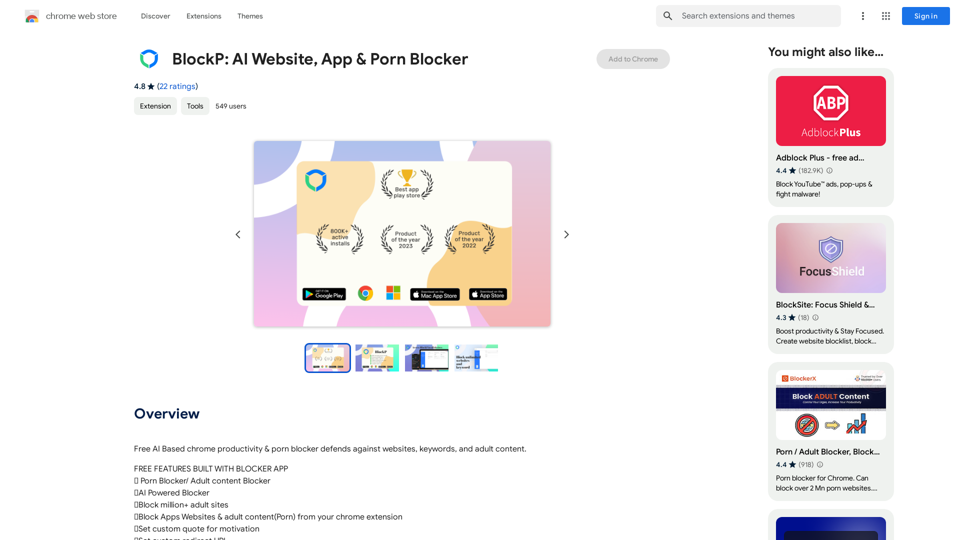
Free AI-Based Chrome Productivity & Porn Blocker Protects Against Websites, Keywords, and Adult Content.
193.90 M
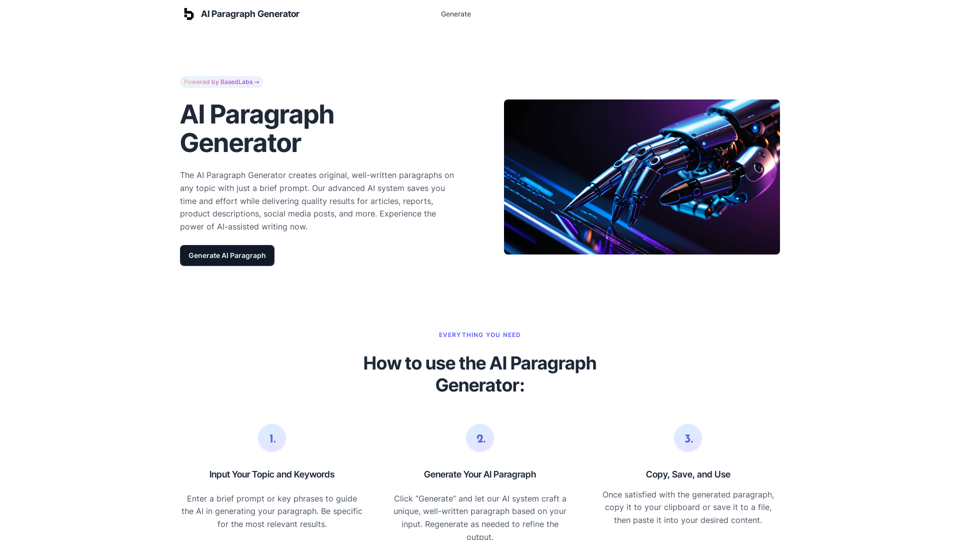
AI Paragraph Generator – Quickly generate paragraphs on any topic with our state-of-the-art AI Paragraph Generator
AI Paragraph Generator – Quickly generate paragraphs on any topic with our state-of-the-art AI Paragraph GeneratorAI Paragraph Generator – Quickly generate paragraphs on any topic with our state-of-the-art AI Paragraph Generator
0
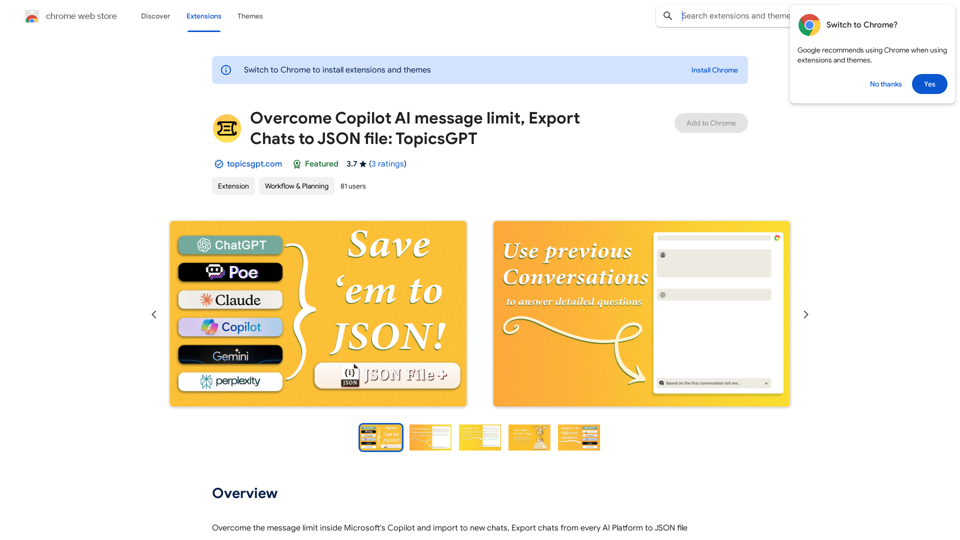
Overcome Copilot AI Message Limit, Export Chats to JSON File: TopicsGPT This is a tool to help you work around the message limit in Copilot AI and export your conversations to a JSON file. Here's how it works: * Extend Your Conversations: TopicsGPT allows you to continue your conversations with Copilot AI beyond the usual message limit. * Save Your History: Export your entire chat history with Copilot AI as a structured JSON file. This makes it easy to review past interactions, analyze your conversations, or even use the data for other purposes. Benefits: * No More Interruptions: Keep your creative flow going without worrying about hitting the message limit. * Organized Data: Have a clear and organized record of your conversations with Copilot AI. * Flexibility: Use the exported JSON data for your own projects or analysis. Let me know if you have any questions!
Overcome Copilot AI Message Limit, Export Chats to JSON File: TopicsGPT This is a tool to help you work around the message limit in Copilot AI and export your conversations to a JSON file. Here's how it works: * Extend Your Conversations: TopicsGPT allows you to continue your conversations with Copilot AI beyond the usual message limit. * Save Your History: Export your entire chat history with Copilot AI as a structured JSON file. This makes it easy to review past interactions, analyze your conversations, or even use the data for other purposes. Benefits: * No More Interruptions: Keep your creative flow going without worrying about hitting the message limit. * Organized Data: Have a clear and organized record of your conversations with Copilot AI. * Flexibility: Use the exported JSON data for your own projects or analysis. Let me know if you have any questions!Bypass Copilot's Message Limit and Move Conversations * Get around the message limit in Microsoft's Copilot: Find ways to exceed the character or message count restrictions within Copilot. * Transfer conversations to new chats: Move existing conversations from one chat space to another. Export AI Chat Histories * Download chat history from any AI platform: Save your conversations with various AI systems as JSON files.
193.90 M
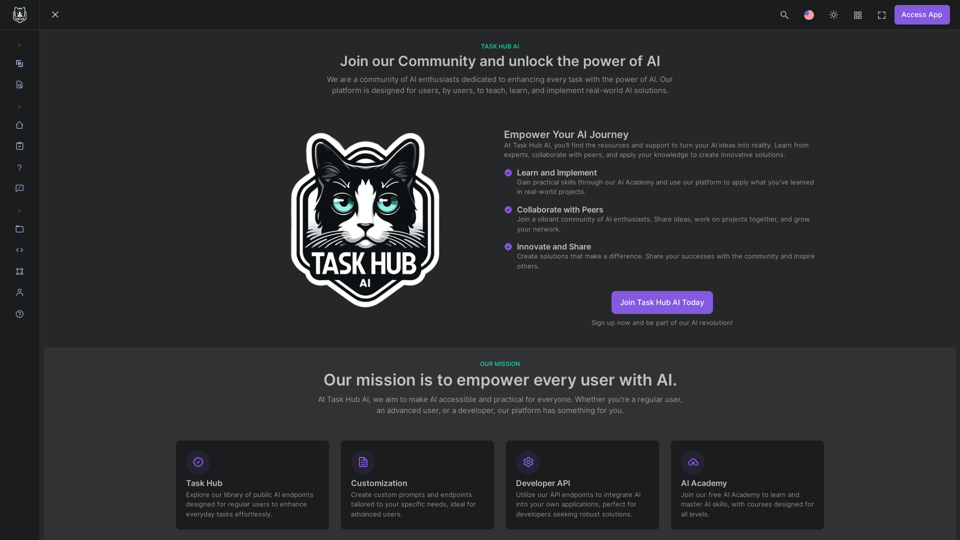
Unlock the power of AI with Task Hub AI. Learn from experts, collaborate with peers, and innovate with our AI community. Sign up now to turn your AI ideas into reality!
0
